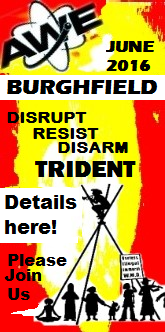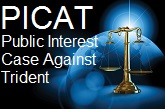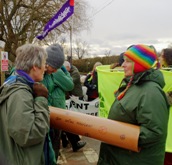STAGE 1: during the action
Legal observers observe and record
• names given by people arrested, (full name is best, first names are better than nothing)
If you are in an affinity group, you will know the names of people in your group, which makes it much easier to trace who has been arrested.
• time and place of arrest
• number of the arresting officer
• reason for arrest
• if arrestee is injured
• unusual or unlawful arrests
• police station the arrested person will be taken to (if possible)
STAY CALM
If someone is being hurt by the police:
• ask the police calmly to stop what they are doing,
• note the time, location and details of what was being done
• note the number of each officer involved and
• what they were doing to the arrested person
Keep your distance, don’t get in the way of anyone’s arrest; it won’t help the person being arrested and you may be threatened with arrest or arrested for obstructing a police officer.
STAGE 2: When the action is over and it look like there will be no more arrests
If you are working in a large Legal support Team, ring in all arrests to the back office/Legal support number.
This person/persons should make a list or table of arrestees, so you can track them until they are released.
This should include:
• Person arrested:
• Time/place arrested:
• Arrested for:
When you get the information you can also record:
• Police station: (where they are being held)
And on release, you can add further information, see Stage 4
STAGE 3: While you are waiting
LS (Legal support) tries to find out which police stations people have been taken to.
LS receives or makes phone calls to police station/s, and adds any new information to information already on the list.
LS tries to find out if anyone needs a lawyer, and/or whether they have been able to call lawyers.
LS tries to find out how long before people will be released, and tells driver (if available) with transport. coordinator.
LS rings lawyer to see if they have had any calls, and notes down any relevant details.
STAGE 4: When you know some people will be released
LS/Drivers go (with map, directions, mobile phone) to collect people from police station.
If you do not have a vehicle, and cannot pick people up, it would be good to tell people before arrest where the nearest train station or bus stop is, so they can get home. You can find out what happened to them over the phone.
It is nice to have some food, drinks etc for people when they get out.
When people are released, Legal Supporters need to record
• get details of charge (if any); record if they have not been charged, or if they have accepted a caution;
• bail conditions (including police bail),
• any court date and contact details, including mobile phone number.
• Gives them number or email to contact for further support.
• Help sort out any transport or other problems
If you are working in a big team, ring the Legal Support Team who can add the information to their list.
STAGE 5: After you think its all over
• Chase up lost people or loose ends
• If people refuse bail conditions or have a warrant out or are still detained – make sure they have access to a
lawyer if they want.












 Nuclear weapons crime in the UK has been reported to Thames Valley Police.
Nuclear weapons crime in the UK has been reported to Thames Valley Police.











